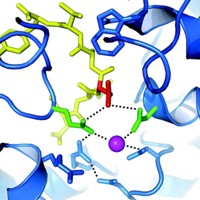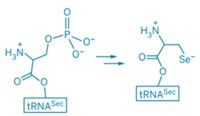Advertisement
Grab your lab coat. Let's get started
Welcome!
Welcome!
Create an account below to get 6 C&EN articles per month, receive newsletters and more - all free.
It seems this is your first time logging in online. Please enter the following information to continue.
As an ACS member you automatically get access to this site. All we need is few more details to create your reading experience.
Not you? Sign in with a different account.
Not you? Sign in with a different account.
ERROR 1
ERROR 1
ERROR 2
ERROR 2
ERROR 2
ERROR 2
ERROR 2
Password and Confirm password must match.
If you have an ACS member number, please enter it here so we can link this account to your membership. (optional)
ERROR 2
ACS values your privacy. By submitting your information, you are gaining access to C&EN and subscribing to our weekly newsletter. We use the information you provide to make your reading experience better, and we will never sell your data to third party members.
Materials
Methyl-Phosphate H-Bonds
Methyl and phosphate groups in selenium-derivatized DNA have been brought close enough together to form hydrogen bonds for the first time
by Celia Henry Arnaud
June 8, 2009
| A version of this story appeared in
Volume 87, Issue 23

In a feat of molecular manipulation, the methyl and phosphate groups in a selenium-derivatized DNA molecule have for the first time been brought close enough together to form hydrogen bonds, reports Zhen Huang and coworkers of Georgia State University (Org. Lett., DOI: 10.1021/ol9004867). Huang's group synthesized thymidine with a selenium atom inserted between the C-5 carbon of the base and its methyl group. The methyl group is usually 4–5 Å away from the closest oxygen of the backbone phosphate, but the selenium linker extends the methyl toward the phosphate. It also provides enough rotational flexibility so that the methyl can turn away from the phosphate into the major groove of the DNA to avoid steric hindrance if there is no hydrogen bonding taking place. The X-ray crystal structure of DNA made with the selenium-modified thymidine reveals that the distance between the methyl and phosphate groups is only 2.93 Å, which is within the typical H-bond distance. Huang suspects that such interactions may play a role in processes that involve unwinding DNA. "This interaction definitely helps reduce the energy barrier for duplex unwinding in replication and transcription, which may also explain why DNA has a regular methyl group but RNA does not," Huang says.




Join the conversation
Contact the reporter
Submit a Letter to the Editor for publication
Engage with us on Twitter